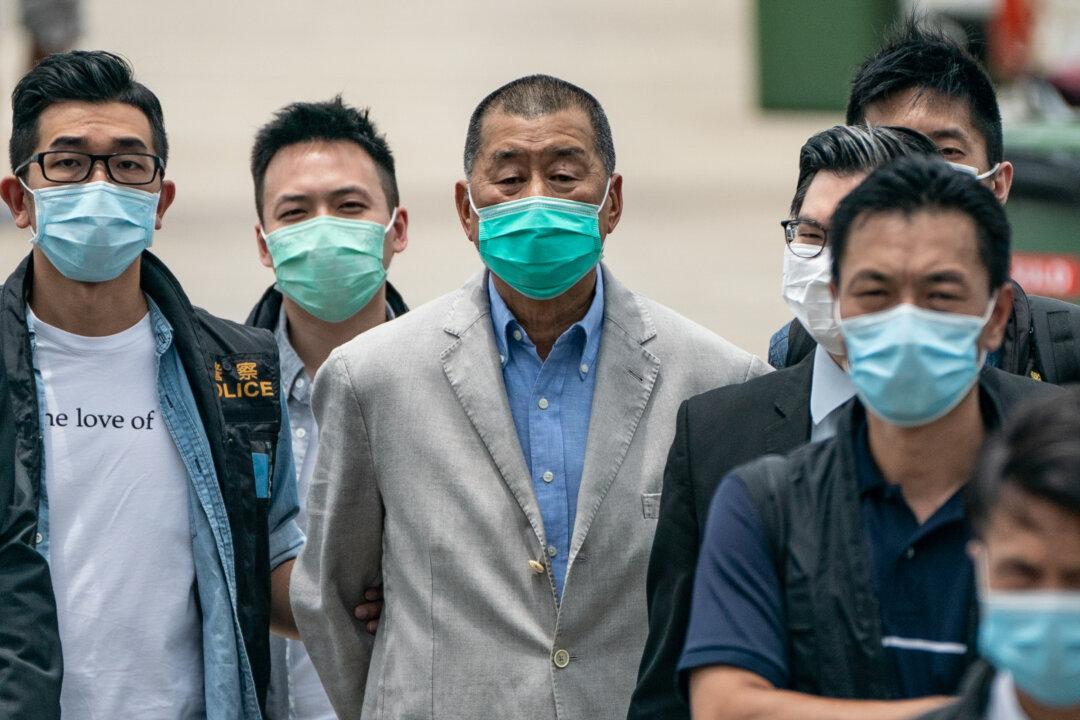NEW YORK—Elected officials joined Columbus Avenue organizations and business owners Sunday in front of the Ivan Pharmacy on the Upper West Side to release a report analyzing the impact of a recent street redesign.
Bike lanes were implemented by the Department of Transportation (DOT) on Columbus Avenue in November 2010 per request from the Community Board 7. Since then, problems have been noted with the new lanes and other redesigns, including the signage and the pedestrian safety islands half-way across the street.
According to Ivan Jourdain of Ivan Pharmacy, confusing parking signs were put up and the Muni-Meters issued parking receipts during prohibited hours; people who thought they had parked legally to drop off or pick up packages, shop, or even pick up their kids subsequently found $90 tickets on their windshields.
“I called the DOT a number of times and I got nowhere,” Jourdain said. “It wasn’t until I spoke to Gale [Brewer] and to Jesse [Bodine, from Councilwoman Brewer’s office] that we were able to get together with all of the people here. [Now] we’re able to help not just the businesses but also the community.”
Jourdain says the issue has already been resolved, as the signs have recently been changed to clearly show what times certain vehicles are allowed to park.
Manhattan Borough President Scott Stringer, state Sen. Thomas Duance, Assemblywoman Linda Rosenthal, Councilwoman Gale Brewer, Community Board 7 Chair Mel Wymore, and the Upper West Side Streets Renaissance created the Columbus Avenue Working Group (CAWG) to address issues caused by the recent street redesign. The group met with the DOT last week.
CAWG representatives investigated Columbus Avenue from 77th Street to 96th Street and sent the DOT a block-by-block diagram with recommendations. Along with this investigation, they sent out surveys to local businesses. Out of the 55 businesses contacted, 36 replied, and 86 percent noted problems with parking or loading zones.
“It’s definitely an adjustment to envision a city in which people, bikes, buses, trucks, and cars share our roadways with ease—but it’s a future worth embracing,” Wymore said. “We all strive to be safer, healthier, and environmentally responsible. Our challenge is to include all stakeholders in developing and implementing designs that work for everyone.”
Since the implementation of the bike lanes, cyclists previously using sidewalks and streets have been staying in the bike lanes; injuries from crashes have been reduced by nearly 50 percent, according to the DOT.
DOT Commissioner Janette Sadik-Khan wrote CWAG a letter on Feb. 6, addressing each of the issues brought up by CAWG. If everything goes according to plan, Muni-Meters that only issue permits during specific parking times will be implemented by early summer.
The DOT commissioner said that the agency would examine Columbus Avenue and work with the community to streamline parking issues.
“We propose restoring parking on selected blocks that do not have heavy left-turn volumes,” Sadik-Khan wrote. “This would be accomplished by eliminating some mixing zones through the institution of left turn bans. If left turns are prohibited on certain blocks, we can restore all of the parking on these blocks. The review of which streets may be appropriate for left turn bans will be completed through discussions with the CAWG and community. We will also examine reducing the length of left turn lanes.”
“We can get the best results by creating working groups that actually ask people their opinion; because of what we have done today, we are making things better for the Upper West Side,” said Stringer, adding that this model should be used throughout the city. He plans to collaborate with the Community Board 3 to implement the same course of action on Grand Street.
Bike lanes were implemented by the Department of Transportation (DOT) on Columbus Avenue in November 2010 per request from the Community Board 7. Since then, problems have been noted with the new lanes and other redesigns, including the signage and the pedestrian safety islands half-way across the street.
According to Ivan Jourdain of Ivan Pharmacy, confusing parking signs were put up and the Muni-Meters issued parking receipts during prohibited hours; people who thought they had parked legally to drop off or pick up packages, shop, or even pick up their kids subsequently found $90 tickets on their windshields.
“I called the DOT a number of times and I got nowhere,” Jourdain said. “It wasn’t until I spoke to Gale [Brewer] and to Jesse [Bodine, from Councilwoman Brewer’s office] that we were able to get together with all of the people here. [Now] we’re able to help not just the businesses but also the community.”
Jourdain says the issue has already been resolved, as the signs have recently been changed to clearly show what times certain vehicles are allowed to park.
Manhattan Borough President Scott Stringer, state Sen. Thomas Duance, Assemblywoman Linda Rosenthal, Councilwoman Gale Brewer, Community Board 7 Chair Mel Wymore, and the Upper West Side Streets Renaissance created the Columbus Avenue Working Group (CAWG) to address issues caused by the recent street redesign. The group met with the DOT last week.
CAWG representatives investigated Columbus Avenue from 77th Street to 96th Street and sent the DOT a block-by-block diagram with recommendations. Along with this investigation, they sent out surveys to local businesses. Out of the 55 businesses contacted, 36 replied, and 86 percent noted problems with parking or loading zones.
“It’s definitely an adjustment to envision a city in which people, bikes, buses, trucks, and cars share our roadways with ease—but it’s a future worth embracing,” Wymore said. “We all strive to be safer, healthier, and environmentally responsible. Our challenge is to include all stakeholders in developing and implementing designs that work for everyone.”
Since the implementation of the bike lanes, cyclists previously using sidewalks and streets have been staying in the bike lanes; injuries from crashes have been reduced by nearly 50 percent, according to the DOT.
DOT Commissioner Janette Sadik-Khan wrote CWAG a letter on Feb. 6, addressing each of the issues brought up by CAWG. If everything goes according to plan, Muni-Meters that only issue permits during specific parking times will be implemented by early summer.
The DOT commissioner said that the agency would examine Columbus Avenue and work with the community to streamline parking issues.
“We propose restoring parking on selected blocks that do not have heavy left-turn volumes,” Sadik-Khan wrote. “This would be accomplished by eliminating some mixing zones through the institution of left turn bans. If left turns are prohibited on certain blocks, we can restore all of the parking on these blocks. The review of which streets may be appropriate for left turn bans will be completed through discussions with the CAWG and community. We will also examine reducing the length of left turn lanes.”
“We can get the best results by creating working groups that actually ask people their opinion; because of what we have done today, we are making things better for the Upper West Side,” said Stringer, adding that this model should be used throughout the city. He plans to collaborate with the Community Board 3 to implement the same course of action on Grand Street.




